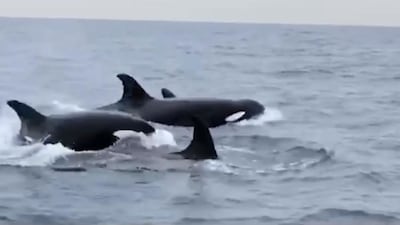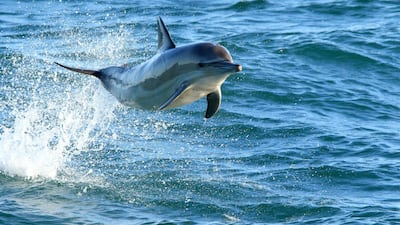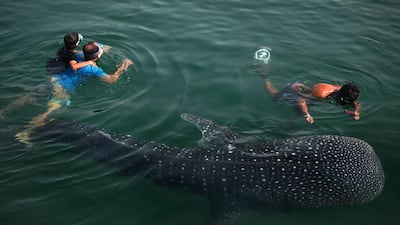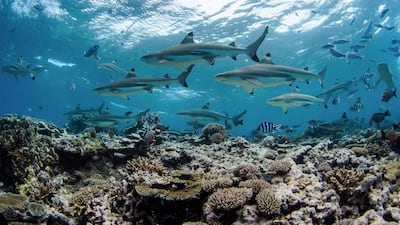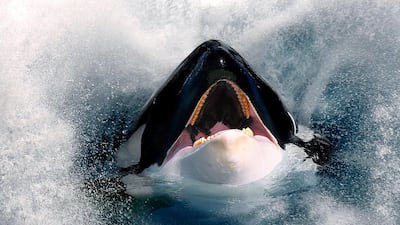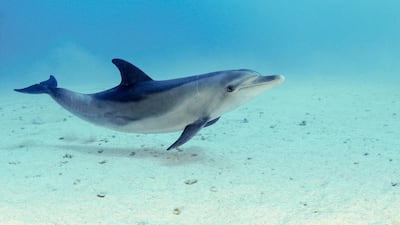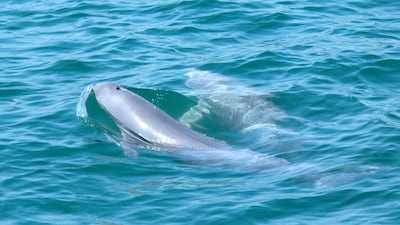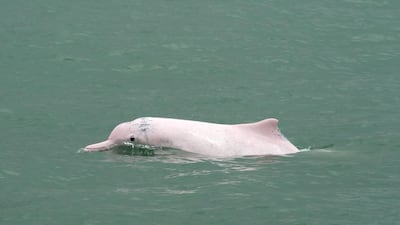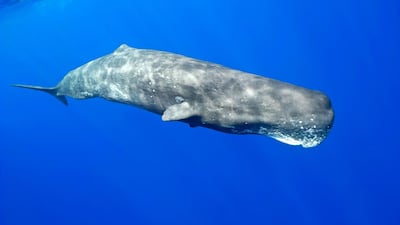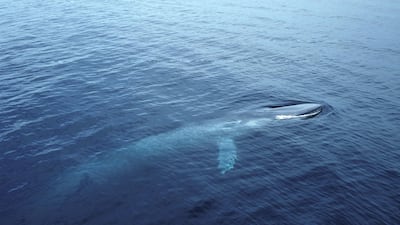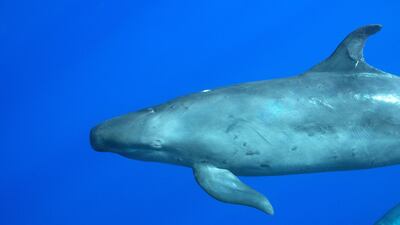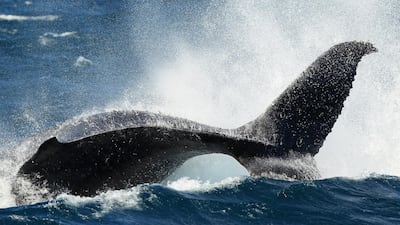A killer whale family last seen off the UAE coast in 2008 has been sighted near Moon Island, about 70km off the coast of Dubai.
The apex predators were sighted over the weekend by an Emirati businessman returning from a fishing tournament.
Ghaith Al Khaja, 27, said their appearance had been a once in a lifetime experience.
The whales, also known as Orcas, included a calf, making the encounter even more special.
“I was returning to Abu Dhabi from a fishing tournament at Moon Island when I first saw the whales,” said Mr Al Khaja.
“It was around 11.30am. I couldn’t believe my eyes seeing the smartest and strongest creatures of the sea so I started filming them,” he said.
Killer whales, a highly social species, are found in almost all of the oceans and seas around the world.
They feed on a variety of fish, mammals and sea birds, and their highest densities are in the north-east Atlantic around the Norwegian coast, as well as the north Pacific and the coast of Antarctica.
Footage of the mammals posted on Instagram by Mr Al Khaja caught the attention of local scientists, who realised its significance.
Georgina Gemmell, co-founder of the Northern Indian Ocean Killer Whale Alliance, a collaborative study of killer whales across the entire Northern hemisphere of the Indian Ocean, said experts found some of the pod were already known to researchers.
“After analysing the footage that was forwarded by Dr Ada Natoli, founder and director of UAE Dolphin Project, researchers agreed that the group comprises of at least eight animals, including one calf and one adult male, and that some individuals are well known to the study and even have names,” said Ms Gemmell.
“Three of the killer whales sighted in Dubai were identified as members of Pod 11, two of which were first recorded off Abu Dhabi in 2008, and then seven years later almost 3,300km away in Sri Lanka.
“This movement between the Arabian Gulf and Sri Lanka provided the first ever record to show killer whales cross the Arabian Sea.
“This sighting is an important piece in an ever-shaping puzzle, demonstrating that this movement is not a one-off and that the same individuals seem to go back to the same areas.”
Ms Gemmell went on to reveal that in February, the Fujairah Whale Project reported one encounter with a pod of killer whales and that it was possible this was the same group.
Researchers are able to track particular mammals by identifying unique features such as tears on a dorsal fin or tail.
“The shape nicks, tears and even small scars help researchers distinguish between each animal,” she said. “For Orcas, the iconic white eye-patch is also used for identification.
_____________
Marine life: The UAE's rare giant visitors
_____________
“The Northern Indian Ocean killer whales are some of the most elusive on the planet, and it is thanks to an ever-growing alliance of individuals and organisations, stretching from the Arabian Peninsula all the way to Indonesia, that we are starting to shed some light on their lives.”
Dr Ada Natoli, founder and director of UAE Dolphin Project, said many marine-life projects in the region relied on citizen science, where members of the public report sightings to researchers.
“The use of social media has allowed citizen science to flourish and is currently aiding scientists in uncovering some long-held whale mysteries,” she said.
“This sighting is again proof of the power of citizen science and scientific collaboration.
“It is hoped that more sightings of these remarkable animals will be reported in the future, to continue learning more about them and laying the basis for their protection.”
Last month, a small pod of false killer whales, also called Pseudorca crassidens, were sighted four or five kilometres off the Fujairah coastline, some 24 years after the first and last recorded sighting of the species in the area.
